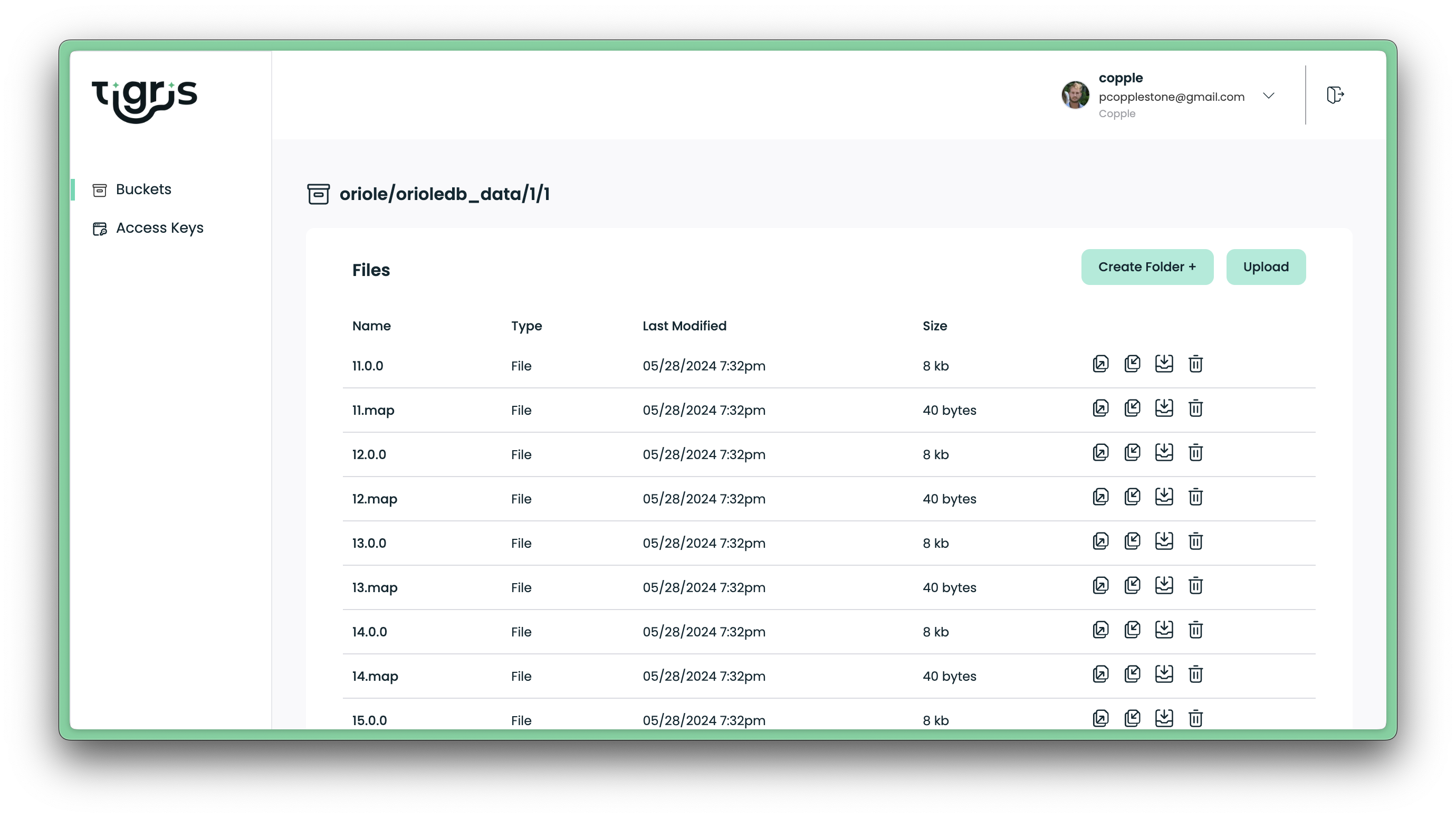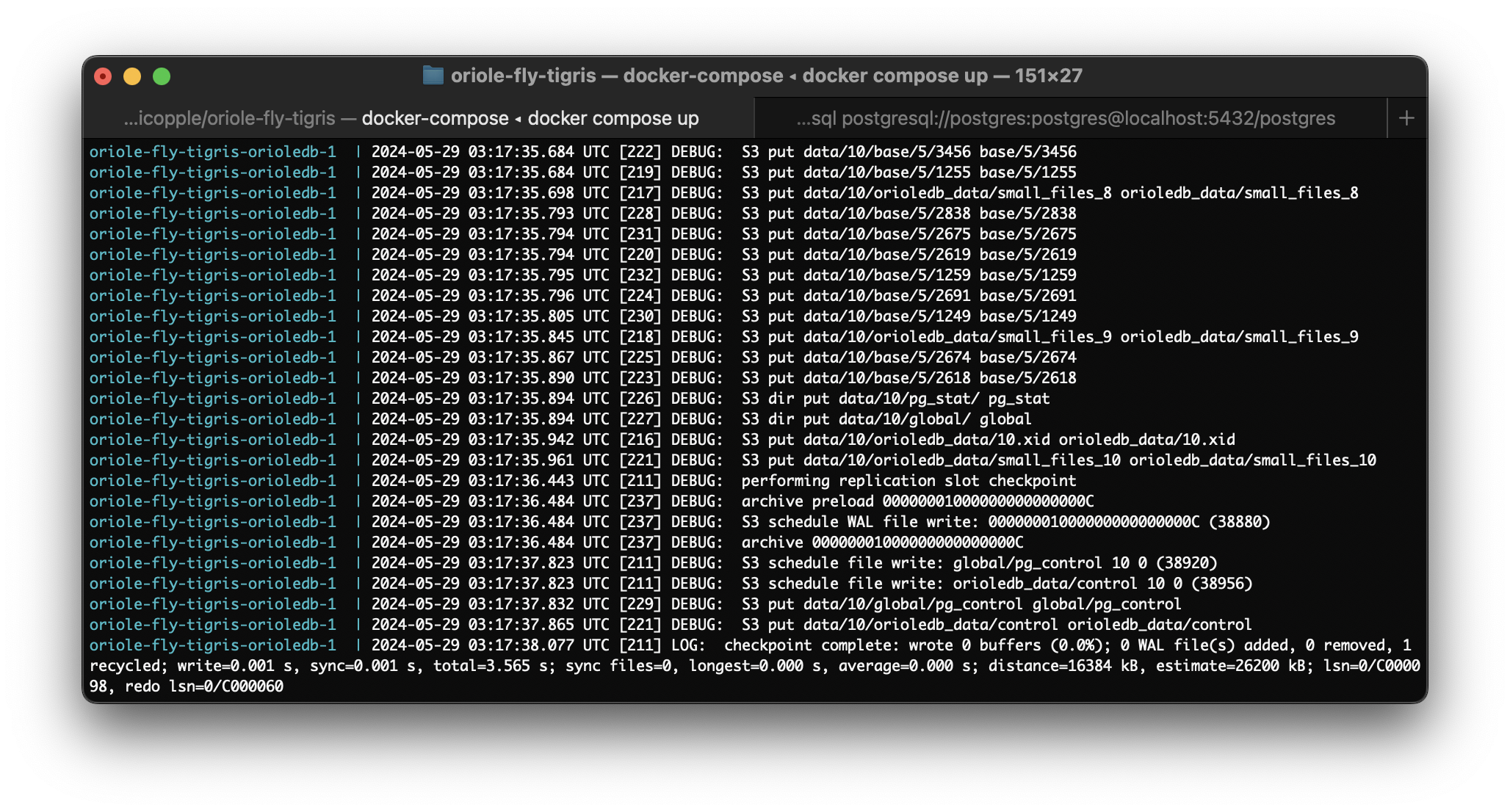Serverless Postgres using Oriole, Fly Machines, and Tigris for S3 Storage.
This is a MVP for Serverless Postgres.
1/ It uses Fly.io, which can automatically pause your database after all connections are released (and start it again when new connections join).
2/ It uses Oriole, a Postgres extension with experimental support for S3 / Decoupled Storage.
3/ It uses Tigris, Globally Distributed S3-Compatible Object Storage. Oriole will automatically backup the data to Tigris using background workers.

Make sure you already have an account with Fly.io.
fly storage create # Keep the credentials, you'll need them in the next stepCopy the sample env file and add your Tigris credentials from above:
cp .env.sample .env
Start Postgres locally using docker compose up.
(You may need to change the execute permissions on ./oriole/entrypoint-s3.sh.)
Enable the Oriole extension:
CREATE extension orioledb;Create a table and insert data:
-- Create a table to store blog posts
CREATE TABLE blog_post (
id int8 NOT NULL,
title text NOT NULL COLLATE "C"
) USING orioledb;
-- Insert 1 million blog posts
INSERT INTO blog_post (select id, 'value' || id from generate_series (1,1000000) id);After this, you the Oriole background workers will store the data in Tigris. You can login to Tigris using fly storage dashboard to view the data:
To deploy your Serverless Postgres to Fly.io, follow these steps:
Create a new Fly app for your Serverless Postgres:
fly apps create your-serverless-postgresReplace your-serverless-postgres with your desired app name.
First, create secrets for your Tigris credentials:
fly secrets set $(cat .env | xargs)Deploy your app to Fly:
fly deploy --ha=falseThis command will use the fly.toml file in the project directory to configure and deploy the app. It is going to create a single machine and an attached volume.
You can now connect to the postgres instance with the host name: <app-name>.fly.dev
- TODO: Deploy a read replica that reads from the same Tigris bucket. To do this we also need to add the Oriole Data Loader and make sure that it is running in read-only mode
I wouldn't recommend using this in production just yet. The goal of this repo is to showcase Oriole and start gathering feedback from anyone who wants to test it out. Please submit any Oriole bug reports to the Oriole GitHub repo.
- Deploy Primary to Fly. Documentation for secure deployment steps for Fly.io has been added.
- Deploy Read Replica to Fly. TODO: document steps
- Distributed read replicas. Oriole can have many read-replicas reading from the same S3 bucket. This is a good pairing with Fly.io that makes it simple to launch servers around the world. Not that if you do this it's very important that the read replicas do not write to the same bucket as your primary or the data will become corrupted.
- Distributed data, without Postgres replication. Tigris replicates any object that requires fast access regardless of the size. It is possible to control this per object.
- Needs to be tested but this implementation but it should work "in theory".
- Non-forked Postgres. Oriole currently requires some patches to the Postgres TAM API. The goal is to make them available in Postgres core.
Oriole has experimental support for S3.
Oriole is a table storage extension for Postgres. It is designed to be a drop-in replacement for Postgres' existing storage engine. The Oriole storage engine's reduction in disk IO is significant enough that it unlocks performant databases backed by S3 compatible blob storage.
Data most-often accessed is cached in local storage for performance. The data is synced with S3 asynchronously:
Read more in the Oriole docs.

